
Breast Augmentation
Choosing a size? Silicone or saline? Under or over? Where’s the incision? Smooth or textured implant? What’s a tear drop implant? What’s a gummy bear implant? What’s a Keller funnel? Are silicone gel breast implants safe? Who makes implants? What is recovery like? What are the risks? How do I schedule a Breast Augmentation consultation and what should I bring? Click Here For Breast Augmentation Gallery
Featured Breast Augmentation Cases

Before
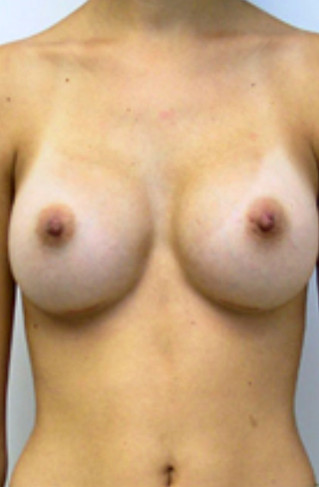
After
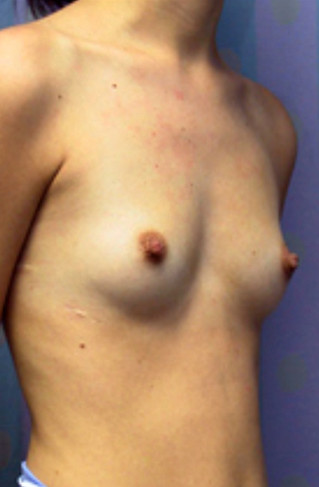
Before
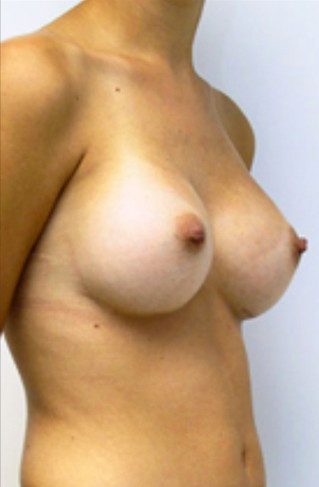
After

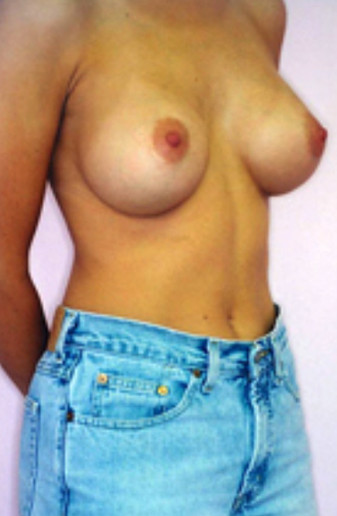
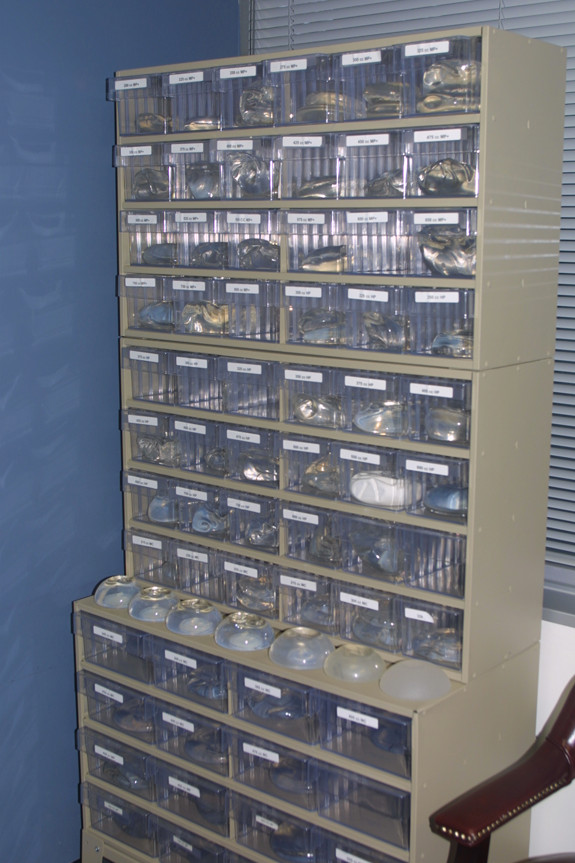
How Do I Choose an Implant Size?
While there are exceptions most women who see me for breast augmentation want to be “not too big, not to small and as natural as possible”. When I size a patient I don’t think cup size or cc. I think about patient size. The key to me is to find a size that balances with the height, shoulders and hips, an implant that is too small will look like a torpedo, an implant that is too big will make a woman look heavy, let alone top heavy. My goal is to find an implant whose diameter gives enough curve under the arm to give a balanced hourglass figure. In my offices we keep implant sizers that my patients try on. When sizing first I try to find the right implant width. Once we like the width, then we change the projection looking at low, moderate, and high profile implants. In my offices we keep implant sizers that my patients try on. When sizing first I try to find the right implant width. Once we like the width, then we change the projection looking at low, moderate, and high profile implants.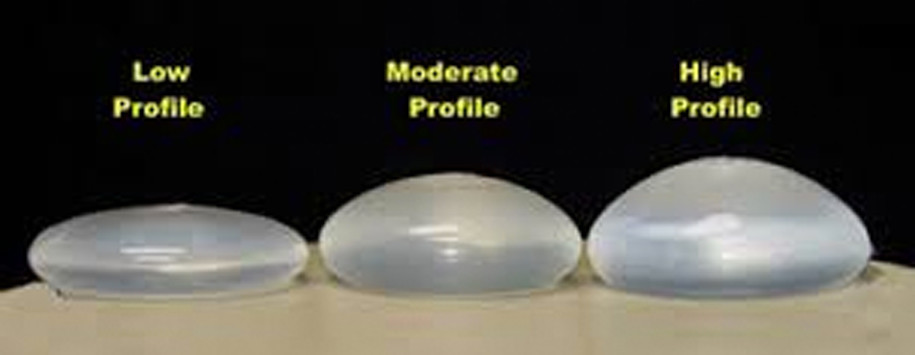

Sizing examples:
Too Big
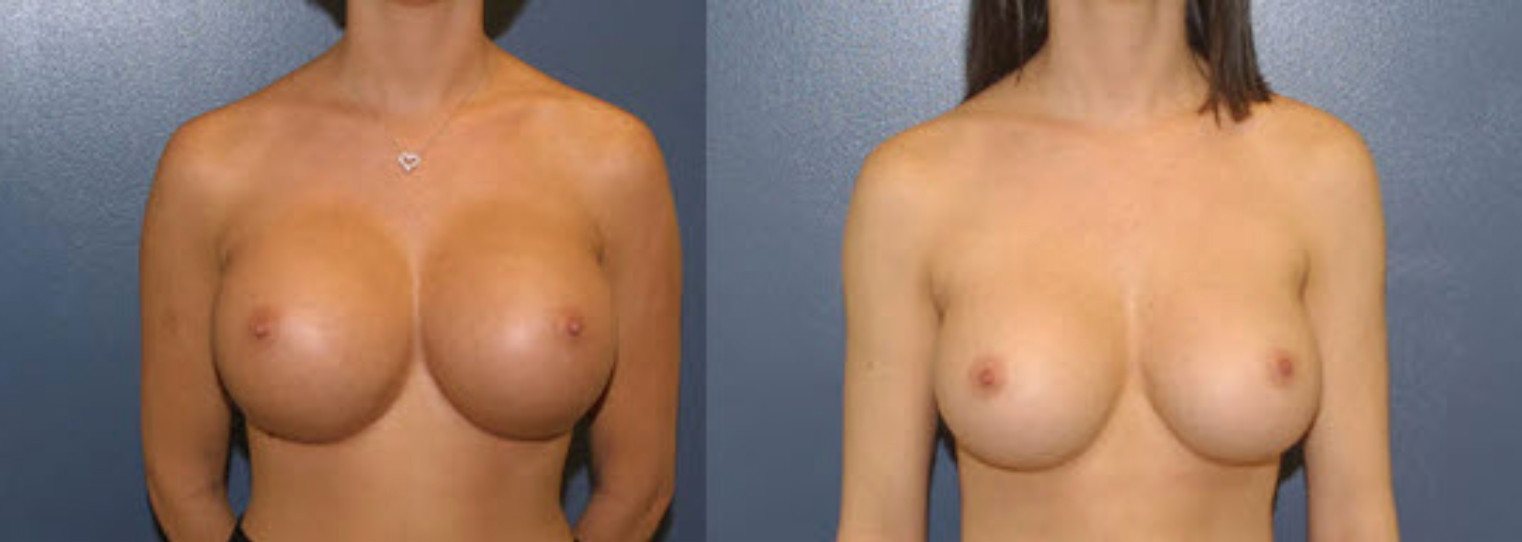
Too Small
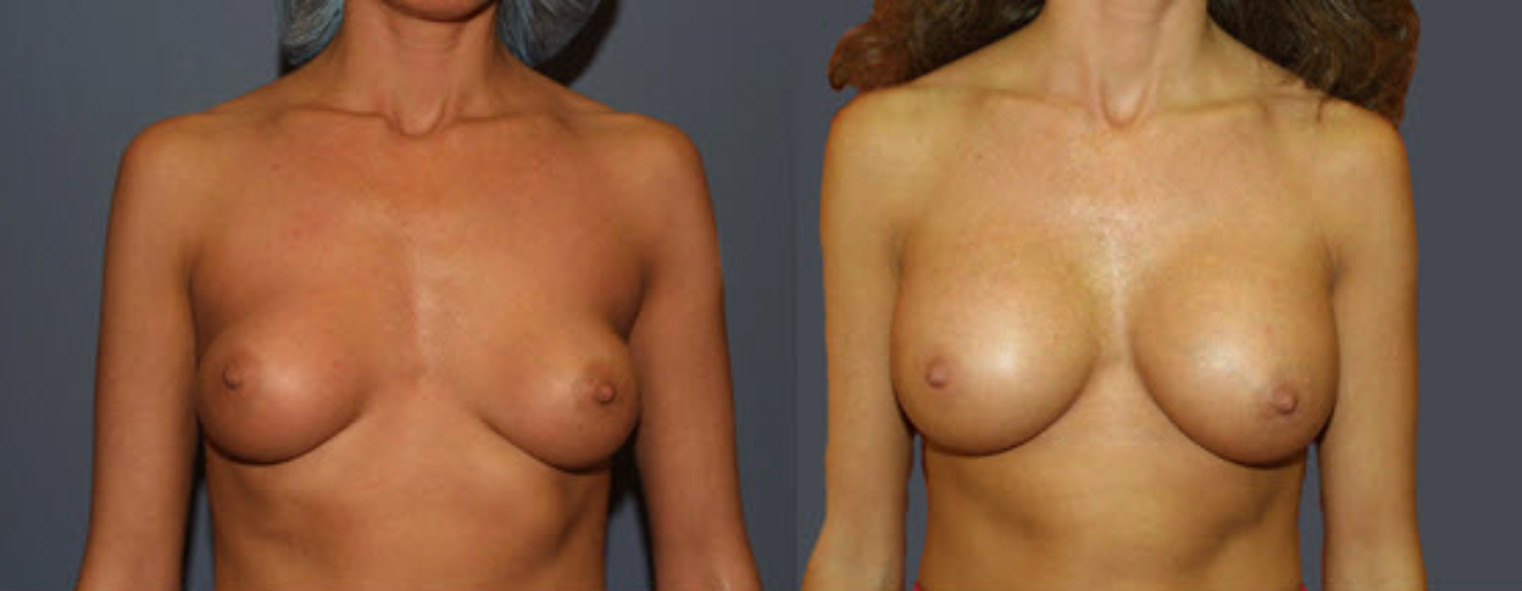
Just Right
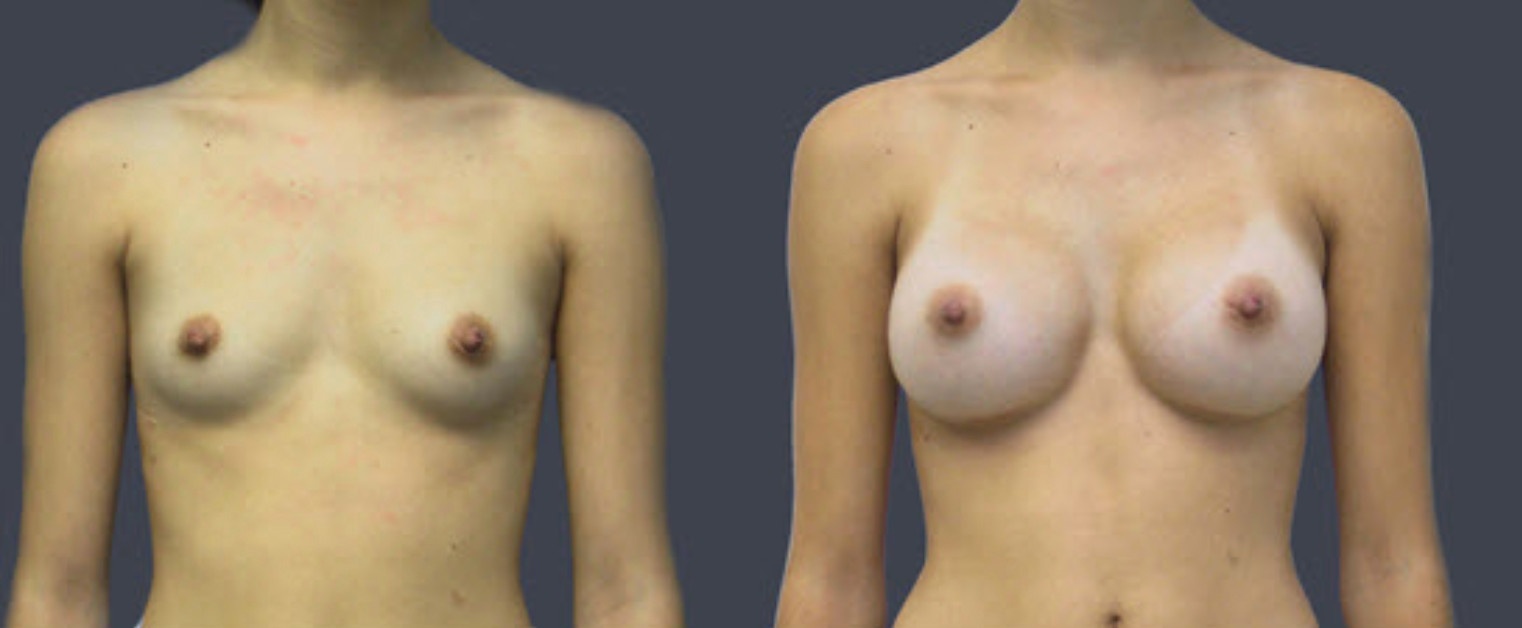
Silicone or Saline?
Breast implants can be filled with saline, or salt water, or silicone gel. There are pros and cons to both. Silicone Pros: Softer, mushier and more natural looking and feeling. Less rippling or waving under the breast. Silicone Cons: Can take a slightly larger incision to place, can not adjust the volume because they are sealed, requires surveillance by MRI, more expensive. My Take: In general I prefer silicone implants because they tend to look more natural, but there are some cases where silicone makes less of a difference. If a woman has little or no breast tissue I prefer silicone because it is much harder to hide saline implant in a patient with minimal breast tissue. If a woman has a b-ish/c-ish breast she will hide a saline implant well, but would still feel more natural with silicone. If a patient has good breast tissue and some mild droop of the breast I will sometimes recommend a saline implant. Saline implants are more full at the top (like a balloon) and elevate the skin of the breast more. If I have a patient with significant asymmetry, a saline implant is more flexible because the volume can be adjusted.Under or over?
Breast implants can be placed above the pectoral muscles, under the breast tissue–this is called subglandular or subfascial. Implants can be places below the pectoral muscle–this is called submuscular. I prefer submuscular placement. Submuscular implants tend to look more natural. The muscle draping over the top of the implant give a softer look. Submuscular implants have a lower rate of “capsular contracture” (abnormal tightening of scar tissue around the implant), infection rate is lower and future mammograms are interpreted more easily. Long term: Natural breast tissue goes south over time with or without implants. If a patient eventually needs a breast lift having the implant under the muscle preserves more blood supply to the breast making future lifts less risky.Where’s the incision?
Breast implants can be placed through incisions below the areola (areolar), in the fold of the breast (inframmary), through the armpit (transaxillary), through the belly button (transumbilical or tuba). Sometimes implants are placed through a tummy tuck (trans abdominoplasty-TABA). The mainstay of my practice is either the periareolar or inframmary approach. For saline both are good options. Silicone implants which are prefilled can sometimes be harder to place through the areola. I personally feel that the axillary and umbilical approaches are less precise. A gel implant can not be placed through the belly button. While the placement through an abdominoplasty (tummy tuck) is less precise as well I offer it as an option to patients who are good candidates.Smooth or textured implant?
Breast implants can come with a smooth or rough surface. Rough surface implants have a lower rate of capsular contracture (abnormal scar tissue tightening) when implants are above the muscle. I don’t think it makes a significant difference below the muscle. My preference: for most patients I prefer smooth implants. Smooth breast implants don’t stick inside the pocket where they are placed. By moving within the pocket they tend to look more natural in my opinion. Textured implants stick to the tissues with no motion and I think they are more feel-able as well.What’s a tear drop implant?
A tear drop implant is smaller at the top and bigger at the bottom. In some cases they can look more natural. All tear drops are textured so that the teardrop sticks inside and maintains the correct orientation. Occasionally, if a tear drop doesn’t stick it can turn sideways and look funny. I prefer smooth, round silicone over teardrops. A silicone implant under the muscle takes on a tear drop shape anyway, and if it rotates around it will make no difference.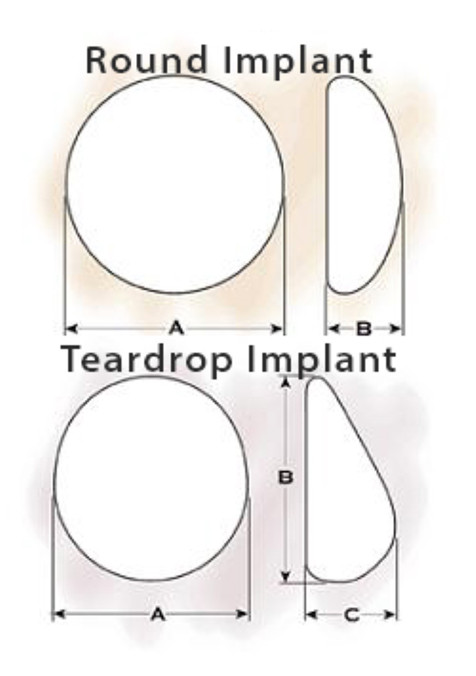
What’s a Gummy Bear?
All silicone gel implants have a thicker silicone gel inside than two decades ago. Teardrop implants, also know as “anatomic” have the thickest silicone because they must keep a specific shape. The Inamed Anatomic was called the Gummy Bear. These implants are textured and firmer sometimes requiring larger incisions. I use them only in certain situations, my preference being smooth round.
What’s an implant funnel?
An implant funnel is a relatively new tool that helps in the insertion of silicone gel implants. Its like a pastry funnel for breast implants. It allows me as a surgeon to place silicone gel implants more easily and through smaller incisions. While I cant yet prove it, I believe that it puts less stress on the implant during insertion and my helps to diminish long term ruptures and capsular contracture.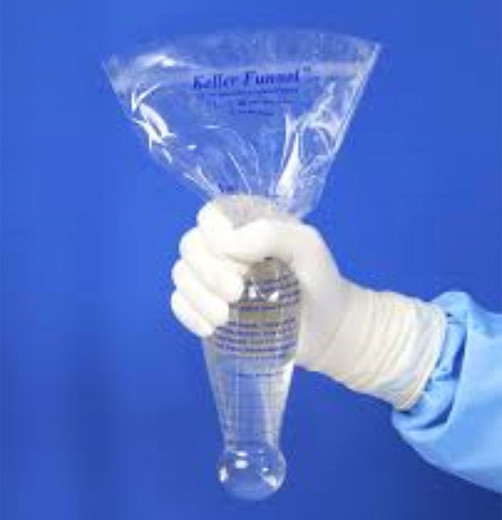
Are silicone gel breast implants safe?
The FDA halted the use of silicone gel breast implants in 1992 due to a lack of information about their safety. There were some questions as to whether a leaking implant could pose significant health threats. After extensive clinical testing, the FDA, breast implant manufacturers, and other researchers have found no link between medical problems and silicone gel breast implants. They concluded:- Silicone gel breast implants do not cause breast cancer or reoccurrence of breast cancer.
- There is no evidence that silicone gel breast implants contribute to an increase in systemic diseases.
- It is safe to breastfeed with silicone gel breast implants.

 Welcome to my new and updated website. I hope you find it not only better than my old one, but different from the many others you may be looking at.
Welcome to my new and updated website. I hope you find it not only better than my old one, but different from the many others you may be looking at.